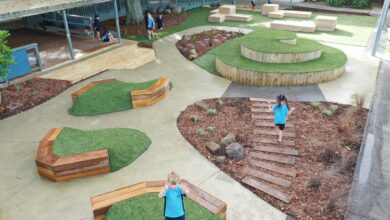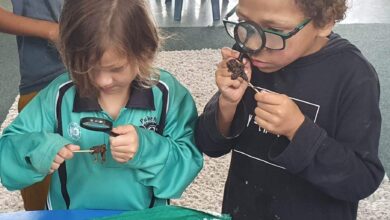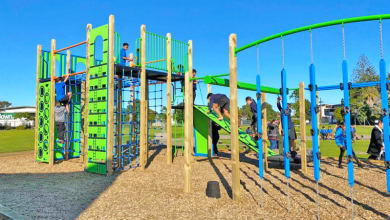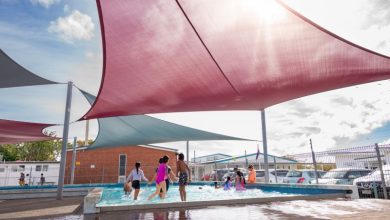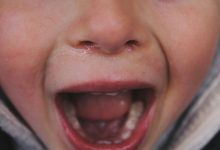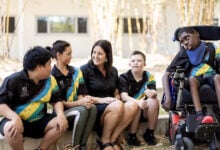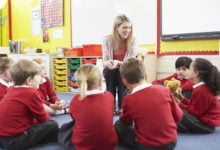Many factors contribute to safe floors at school
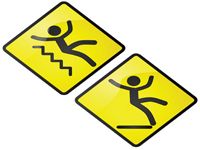
 Falls are the leading cause of injury hospitalisation and one of the leading causes of injury death in New Zealand.
Falls are the leading cause of injury hospitalisation and one of the leading causes of injury death in New Zealand.
Slips, trips and falls account for about 40 per cent of unintentional injury hospitalisations and 20 per cent of unintentional injury deaths.
The most common place for this to happen is at home, but injuries at school are a serious problem around the world. Schoolyard injuries cost New Zealand taxpayers almost $14 million last year. ACC figures show more than 60,000 pupils were injured at school. Some 7534 staff made claims worth $4.6million.
Of the 63,395 total injuries recorded in school grounds, hands, wrists, fingers, thumbs, ankles and the face were the main parts of the body damaged, while 260 pupils injured their internal organs. The single biggest cause of injury to pupils and staff was losing balance or control, which saw 19,686 pupils harmed and 1433 staff.
More than 5380 pupils were hurt when they tripped or stumbled. Some 338 pupils and 105 staff were hospitalised as a result of their injuries in 2010, 3256 pupils and 650 staff needed dental treatment and 59,401 pupils and 6750 staff received other medical treatment.
Reasons given for the injuries are many and varied. Some pundits attribute blame to the lack of natural physical conditioning by modern day pupils and even lack of an adequate diet.
Secondary Principals’ Association of New Zealand president Patrick Walsh said that with groups of energetic young people “something’s bound to go wrong from time to time,” despite schools’ comprehensive health and safety systems. He said one reason for school injuries was that many children these days were not physically fit or were obese, and when they did get active at school, they suffered an injury.
Another senior education executive said he believed more children were suffering broken bones than in the past because their parents could no longer afford sufficient milk to give them adequate calcium.
Improving slip resistance
But while economic and lifestyle issues may well contribute to the seriousness of some injuries, the fact is that the slips and falls are happening, and outcomes can range from long lasting to permanent, and are very expensive to treat.
New Zealand building experts agree that using the right surface could prevent a great many slip and fall accidents. Trevor Pringle, principal writer for BRANZ, an independent and impartial research, testing, consulting and information company providing services and resources for the building industry. says slips usually result from wet or greasy surfaces, shiny floors, loose floor coverings, step or stair edges with no grip, footwear with little grip or step treads that are too small. The end result is usually a loss of balance and a fall. To reduce the risk of slipping, a finished floor surface needs to provide sufficient friction so that it is slip resistant.
However, even where surfaces have proved hazardous in the past, there may be no need to go to the expense of ripping them up and putting down a replacement surface. New treatments are now available which can simply be applied over the existing tiles or concrete.
Elesia Ogg, business development manager at Andy Andersons Industrial Services , says most non-slip treatments usually involve making a surface rough in some way. “That generally makes the surface look less attractive and it will be more difficult to keep clean.
“There is new technology available now that can make a surface less slippery when it’s wet without altering the appearance of the tile. We’ve used this type of treatment on quite a few schools across New Zealand now and they’ve been really pleased with it. ” she said.
International survey
Falls within school buildings are regarded extremely seriously in a number of other countries, particularly those where moisture is a problem in winter months, like New Zealand. For instance, in 2004 in Canada, a panel of experts was put together to investigate the causes of slips inside school buildings. Drawing on information from around the world, it produced an extensive report which found among other things that selection of flooring material was a significant factor in slip floor incidents and was an aspect of safety that could be largely controlled by the building owner/operator.
Among the extensive findings in the report were: “The Panel found that looks alone should not dictate the choice of flooring material. Choice required careful consideration of durability, use pattern, environmental factors and maintenance capabilities. A principal consideration needed to be floor slipperiness (the coefficient of friction).
“The expert panel determined that the slip floor problem did not end with the selection of suitable flooring material. To maintain its non-slip properties, flooring material had to be protected from wear. The choice of floor treatment (coating) could significantly alter the ability of a flooring material to maintain a suitable coefficient of friction. A non-slippery floor could be rendered slippery if the floor coating was allowed to wear away. As well, a non-slippery floor could be rendered slippery by the application of an improper floor finish,” the report continued.
“The expert panel determined that floor slipperiness was also a property of ongoing floor maintenance. Clean floors are less slippery than dirty floors. Surface contaminants on a floor not only destroy the floor finish but also act between the sole of a shoe and the floor surface to cause a loss of friction with resultant slips and falls.”
The panel said that girls and women were more likely to fall than men, partly because they owned a larger variety of footwear and because of the type of shoes they wore. Nor did injury only necessarily occur when the person struck the floor or another object on the way down. The very act of slipping could cause twisting, leading to spinal and muscle problems that might never fully heal.
ACC takes injury prevention in schools very seriously and offers a number of programmes and resources to help keep pupils and teachers safer.


